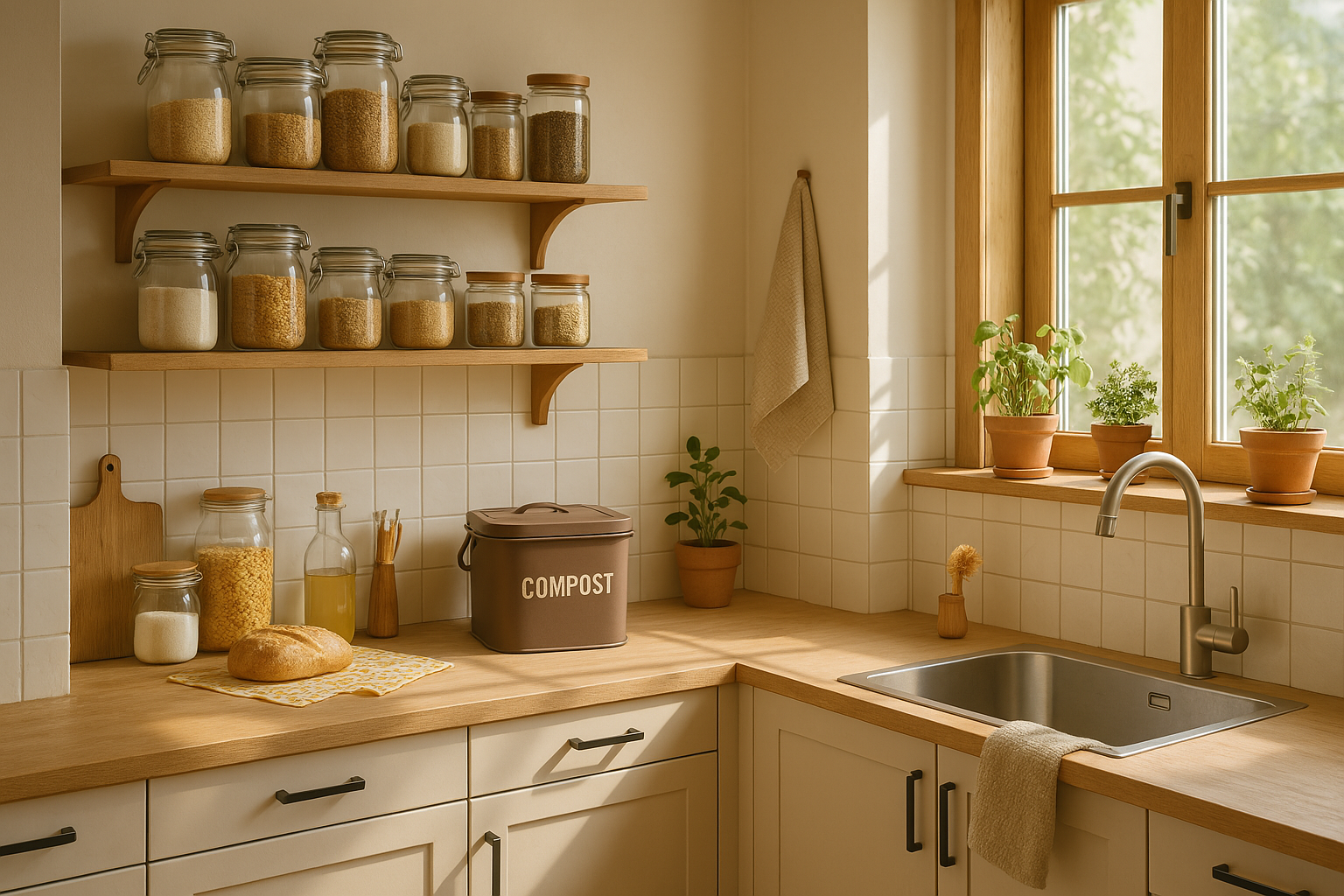Zero-Waste Home Tips: A Practical Guide to Sustainable Living in 2025
Introduction: Why Zero-Waste Living Matters More Than Ever
In 2025, the average person generates nearly 4.9 pounds of waste per day, much of which ends up in landfills or oceans. The zero-waste lifestyle is a powerful response to this crisis aiming to reduce what we send to landfills by rethinking how we consume, reuse, and dispose of everyday items.
But here’s the good news: going zero-waste doesn’t require perfection. It’s about making intentional, sustainable choices that reduce your environmental footprint one reusable bag, compost bin, or DIY cleaner at a time.
Whether you’re a curious beginner or someone looking to level up your eco-game, this guide will walk you through practical, real-world zero-waste home tips that are easy to implement and impactful.
What Is a Zero-Waste Home?
A zero-waste home aims to minimize the amount of trash sent to landfills by rethinking how we consume, reuse, and dispose of everyday items. The goal isn’t perfection it’s progress. By adopting sustainable habits and choosing reusable alternatives, you can significantly reduce your household waste.
The 5 R’s of Zero Waste:
- Refuse what you don’t need.
- Reduce what you do use.
- Reuse what you can.
- Recycle what you can’t refuse, reduce, or reuse.
- Rot (compost) the rest.
Why Go Zero-Waste in 2025?
- 🌍 Global waste is projected to increase by 70% by 2050, according to the World Bank.
- 🛍️ The average American produces over 4.9 pounds of trash per day.
- 🧴 Only 9% of plastic waste is actually recycled.
With climate change and pollution at critical levels, individual action matters more than ever. A zero-waste home is a powerful way to contribute to a healthier planet.
Getting Started: Zero-Waste Swaps for Every Room
🛒 Kitchen: The Heart of Waste Reduction
Common Waste Culprits:
- Plastic wrap
- Single-use containers
- Food waste
Zero-Waste Swaps:
- Beeswax wraps instead of cling film
- Glass jars for pantry storage
- Reusable silicone bags
- Compost bin for food scraps
Real-World Example: Gabriel, a zero-waste advocate from Oregon, cut his kitchen waste by 80% by switching to bulk shopping and composting. “I started small—just stopped buying paper towels. Now, I haven’t taken out the trash in weeks.”
🧼 Bathroom: Small Space, Big Impact
Common Waste Culprits:
- Disposable razors
- Plastic shampoo bottles
- Cotton rounds
Zero-Waste Swaps:
- Safety razors with recyclable blades
- Shampoo and conditioner bars
- Reusable cloth rounds
- Bamboo toothbrushes
Expert Tip: “Switching to bar soap and refillable containers can reduce bathroom plastic waste by up to 60%,” says Dr. Emily Lawrence, an environmental chemist.
🧺 Laundry & Cleaning: Eco-Friendly and Effective
Zero-Waste Cleaning Hacks:
- Use vinegar and baking soda for all-purpose cleaning
- Switch to laundry detergent sheets or soap nuts
- Replace dryer sheets with wool dryer balls
Pro Tip: Make your own all-purpose cleaner: Mix 1 part vinegar, 1 part water, and a few drops of essential oil in a reusable spray bottle.
🛏️ Bedroom & Closet: Rethink Fast Fashion
Sustainable Habits:
- Buy secondhand or vintage clothing
- Host clothing swaps
- Repair instead of replace
Data Point: Extending the life of clothing by just 9 months can reduce its carbon footprint by 30%, according to the Ellen MacArthur Foundation.
Composting 101: Turning Scraps into Soil
Why Compost?
- Food waste makes up 30% of household trash
- In landfills, it releases methane—a potent greenhouse gas
How to Start:
- Collect food scraps (veggies, coffee grounds, eggshells)
- Use a countertop bin or outdoor compost pile
- Turn regularly and keep it moist
Beginner Tip: If you live in an apartment, try Bokashi composting or an electric indoor composter like the FoodCycler.
Shopping Smart: Reduce Waste Before It Enters Your Home
Strategies:
- Shop in bulk with your own containers
- Choose products with minimal or compostable packaging
- Support local farmers markets
Look For:
- Refill stations for cleaning and personal care products
- Brands offering take-back or reuse programs (e.g., Loop, Lush)
Digital Minimalism: The Hidden Waste
While not physical, digital clutter consumes energy. In 2025, data centers account for 2% of global carbon emissions.
Tips:
- Unsubscribe from unused email lists
- Delete old files and apps
- Use cloud storage powered by renewable energy
Expert Voices: What the Pros Say
“Zero-waste isn’t about deprivation it’s about intention. Every small change adds up.” Anne-Marie Bonneau, The Zero Waste Chef
“We don’t need a handful of people doing zero-waste perfectly. We need millions doing it imperfectly.” Anita Vandyke, Author of A Zero Waste Life
Conclusion: Small Steps, Big Impact
Creating a zero-waste home in 2025 is more achievable than ever. With growing awareness, better products, and community support, you can make meaningful changes without sacrificing comfort or convenience.
Start with one room, one habit, or one swap. The planet and your future self will thank you.
✅ FAQ: Zero-Waste Home Questions Answered
1. Is zero-waste expensive to start? Not necessarily. Many swaps (like reusable cloths or jars) save money over time. Start with what you already have.
2. What’s the easiest zero-waste habit to adopt? Using a reusable water bottle or shopping bag is a great first step.
3. Can I go zero-waste in an apartment? Absolutely! Try indoor composting, reusable products, and digital minimalism.
4. What do I do with items I no longer need? Donate, sell, or repurpose them. Avoid sending usable items to landfills.
5. How do I get my family on board? Lead by example, make it fun, and involve them in small changes like DIY cleaners or meal planning.
6. Are there apps to help track waste? Yes! Apps like JouleBug, My Little Plastic Footprint, and Too Good To Go are great tools.
7. What if I mess up? That’s okay! Zero-waste is a journey, not a destination. Progress over perfection.
